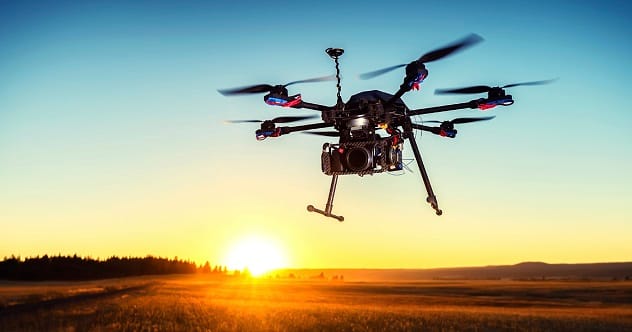Humankind has always been fascinated by what lies ahead. It’s a natural part of our curiosity to wonder about our purpose and the world’s unfolding story. Gazing into the future allows us to contemplate our role in the grand scheme of things. After all, with no way to turn back the clock, moving forward is our only path. Throughout history, many have ventured guesses about life in times to come. But predicting the future is a tricky business.
While numerous thinkers have pondered the impact of new technologies, with robots and space travel being popular themes, many past forecasts missed the mark wildly. Remember the old belief that we’d be living underwater and riding giant seahorses? Clearly, not all predictions pan out. Yet, in the following ten cases, prognosticators from bygone eras were astonishingly accurate with their visions. Though they might not recognize today’s specific context, these old-time predictions proved remarkably insightful!
10 Space Travel
It’s no great shock that past generations predicted space travel. For centuries, scientists and philosophers have dreamed of voyaging to other realms. With the moon and stars always visible, even before telescopes, they’ve long been focal points for future aspirations.
Back in 1661, English philosopher Joseph Glanvil theorized that journeying to the moon would one day be as commonplace as sailing to America. Considering the difficulty of Atlantic voyages then, his comparison to moon travel isn’t too far-fetched. Two centuries later, Jules Verne elaborated on this in From the Earth to the Moon. Despite being written in 1865, Verne’s ideas about space launches and moon landings bear a striking resemblance to modern-day practices.
Early 20th-century thinkers also expanded on Verne’s concepts. One artist in the 1920s envisioned space travel via propeller-driven flying taxis, imagining a quick trip to the moon would be like hailing a cab. While space travel isn’t quite that simple today, it’s not a million miles off. The ultra-wealthy can now book flights beyond our atmosphere. So, in a way, those old predictions about space taxis were surprisingly on point!
9 Robots, Robots, Robots
The concept of artificial intelligence has captivated philosophers for ages. Naturally, the advanced computing technology we possess today wasn’t part of their early theories. However, thinkers long ago mused about how automation might reshape life. In 1921, Czech writer Karel Čapek penned Rossum’s Universal Robots, a play exploring mechanization replacing manual labor. His use of the Czech word “robota,” meaning forced labor (derived from a Slavic root for “slave”), was deliberate. The term quickly gained traction, leading to the English word “robot” for any artificial labor substitute.
Čapek’s anxieties about mechanization were shared by other thinkers of the late 19th and early 20th centuries, who fretted about automated work. Today, robots are continuously transforming factory operations globally, altering the labor landscape just as Čapek envisioned. Not all robot predictions were so serious, though. Over a century ago, French artists imagined robots as helpful domestic assistants. One artist depicted small robots performing automated household cleaning. As any Roomba owner can attest, these high-tech helpers are a welcome aid in mechanizing mundane chores!
8 High Speed Trains
Before automobiles dominated global transport, trains were the primary mode of travel. It’s logical, then, that futurists would see them as central to what lay ahead. In 1900, American engineer John Elfreth Watkins made several predictions about the 21st century, including the advent of high-speed trains. Watkins posited that locomotives would eventually reach speeds over 120 miles per hour (193 kph). He was certainly correct, though he actually underestimated the technology’s potential.
Today, the Acela Express in the United States can hit 150 miles per hour (240 kph). Japanese bullet trains are even faster, with some achieving 200 miles per hour (320 kph). Extensive high-speed rail networks have also been established in China and elsewhere. Many engineers in the early 20th century were already contemplating high-speed rail. During the Great Depression, luxury car brand Bugatti seriously explored this, producing Autorails—individual train cars for long journeys that, as Watkins predicted, reached 120 mph.
The idea didn’t gain widespread traction after the Depression, as cars quickly rose to prominence and have remained so. Nevertheless, with modern governments seriously considering projects like single-lane high-speed tunnels, it’s clear those old train concepts were truly ahead of their time.
7 Digital Media And Citizen Journalism
Watkins’s 21st-century forecasts extended beyond trains. He also speculated on the future of photography. Cameras, still a relatively new and cumbersome technology at the time, involved a lengthy development process. Looking a century ahead, Watkins imagined a much faster system. “Photographs will reproduce all of nature’s colors,” he wrote in his 1900 analysis, predicting today’s vivid photography. “Photographs will be telegraphed from any distance,” he added. “If there be a battle in China a hundred years hence, snapshots of its most striking events will be published in the newspapers an hour later.”
While Watkins couldn’t have conceived of today’s internet, his predictions about photo-sharing sound remarkably like modern digital media. His then-audacious claim that pictures could be published “an hour later” was spot on. Thanks to global access to social media, citizen journalists can report on events and disseminate content almost instantaneously. Within seconds, images and news are replicated on screens worldwide. Watkins would be amazed by the speed of information flow today, but his prediction was undeniably accurate!
6 Factory Farming vs. Farm-to-Table Food
F.E. Smith, a contemporary and friend of British politician Winston Churchill, was known for his outspoken nature. In the 1920s, he published a book outlining his predictions for the world a century later. While some were off-target, others proved strikingly accurate, particularly his take on food production.
Smith claimed that synthetic, lab-produced food would become dominant “in civilized lands” to feed an expanding population. “From one ‘parent’ steak of choice tenderness,” he wrote, “it will be possible to grow as large and juicy a steak as can be desired.” With lab-grown meat production on the rise today, Smith’s prediction seems prescient. Moreover, the proliferation of highly efficient factory farms over recent decades has largely supplanted the traditional local farmer.
Smith believed individual farming would survive mainly “as a rich man’s hobby.” He argued that in the 21st century, only men of “wealthy rejuvenation” could “boast that the bread he eats is made from wheat which grows in his own fields.” While modern food production hasn’t entirely reached this extreme, the flourishing of farm-to-table restaurants offering artisanal, locally-sourced dishes in affluent areas suggests that relative wealth indeed provides access to better, more natural ingredients. In this respect, Smith’s vision of gentlemen farmers has an interesting parallel today.
5 Netflix and Chill
A century ago, at-home entertainment options were sparse. Beyond books, diversions were few. Radio was in its infancy, and television was still some way off. Yet, experts of the time were already envisioning a fascinating future. In 1921, inventor Charles P. Steinmetz published an article predicting something akin to streaming services. He didn’t use that term, of course, but his description was eerily accurate. “There will be no need to go to some congested, poorly ventilated hall for a musical concert,” Steinmetz wrote. “Music will be supplied by a central station and distributed to subscribers… while sitting in our libraries at home.”
Even before Steinmetz, people contemplated home entertainment. A series of postcards from 1900 predicted that moving images would one day be transmitted into homes. Over a century later, services like Netflix and Hulu have realized this vision. Predictions also extended to concert hall entertainment. One postcard set depicted audiences attending a show as usual, but instead of watching a live orchestra, they observed a conductor operating a machine that controlled an automated band. Perhaps modern electronic DJs owe a nod to that early foresight.
4 Smart Phones, Zoom Calls, and FaceTime
Streaming services weren’t the only technologies foreseen for home delivery. Long ago, futurists wondered if work calls could be conducted from home. French cartoons from the early 1900s depicted people communicating over long distances using video conferencing. In these illustrations, the technology was projected onto a wall by a gramophone—a far cry from today’s Zoom calls and FaceTime, but the steampunk aesthetic clearly showed thinkers were pondering its potential. Visionaries throughout the 1920s diligently worked on these concepts.
In 1926, Nikola Tesla predicted the eventual availability of video conferencing. Just a year later, inventors demonstrated a very rudimentary prototype. In subsequent years, science fiction writers embraced the idea, with countless books featuring futuristic video calling. For a long time, such technology seemed like a distant dream.
However, by the 21st century, Skype became dominant, followed swiftly by FaceTime. Zoom’s widespread adoption during the pandemic marked a significant turning point. Live streaming on platforms like Instagram and Twitch has taken video conferencing global. Now, video calls via smartphones and laptops are commonplace. Tesla and other old-time visionaries have been proven correct.
3 Drone Warfare
Remember F.E. Smith, Churchill’s associate? His 1920s prediction about synthetic food wasn’t his only bullseye. Smith also foresaw a high-tech future involving drone warfare. Having lived through World War I, which saw tens of millions of casualties, it’s understandable that Smith would consider ways to wage war with less manpower. In his futuristic writings, he described “entirely unmanned” tank warfare directed by soldiers “in a distant control room” far from the battlefield.
Alternatively, Smith suggested tank captains could monitor progress from above. “The commanders of tank forces will be carried in the air above their commands,” he wrote, “able to watch the course of operations and control their progress by wireless telephony.” He argued this would make war “more humane.”
Smith couldn’t have imagined today’s drone warfare specifics, but his descriptions sound remarkably similar to the unmanned vehicles used in modern conflicts. Furthermore, his theory of tank commanders observing from above parallels how high-powered satellites and cameras are used today to track battles from afar. Whether war is now “more humane” remains debatable, but there’s no denying Smith was remarkably accurate about unmanned vehicles in combat.
2 Earbuds, But Make It 1953
When Ray Bradbury published Fahrenheit 451 in 1953, it was lauded as a dystopian warning against censorship and a rich piece of science fiction. As it turned out, Bradbury’s classic work also predicted aspects of future technology. In the novel, protagonist Guy Montag, weary of his job burning books, endeavors to preserve literature. In doing so, he uses technology unheard of at the time.
In one memorable scene, Montag uses a concealed earpiece to communicate with Faber, the English professor. Wireless technology was still decades away, and the idea of an earpiece fitting snugly in one’s ear wasn’t on anyone’s radar in the early 1950s. But Bradbury took it further. Describing these hidden earpieces, he wrote, “in her ears the little seashells, the thimble radios tamped tight, and an electronic ocean of sound, of music and talk and music and talk coming in, coming in on the shore of her unsleeping mind.”
At the time, the notion of a seashell-shaped earbud must have seemed otherworldly. Decades later, Silicon Valley innovators made it a reality. Now, “thimble radios” like these are ubiquitous. And just as Bradbury predicted, these earbuds indeed pipe in an endless stream of music and talk for the wearer.
1 Electric Ride-Share Scooters
Between 1899 and 1910, French artists involved in the “En L’An 2000” (In the Year 2000) art series endeavored to imagine life in the new millennium. As we’ve seen, some of these visionaries predicted inventions like the Roomba. Others focused on new modes of transportation. Artist Jean-Marc Côté, in particular, created an almost perfect prediction of ride-share scooters and e-bikes.
In his artwork, Côté depicted Parisians gliding through the streets on small, wheeled contraptions. While he envisioned these more as tiny electric skates than scooters, they were powered and intended to show effortless personal transport. In one sense, Côté didn’t have to wait long for his vision to partially materialize.
By the 1920s, people were already zipping around on early powered scooters, some of which bear a striking resemblance to today’s models. In recent years, companies like Uber, Bird, and Lime have deployed fleets of electric scooters across major cities. To someone from 1900, seeing these wheeled e-buggies would surely feel like a prediction come true. One can only imagine what those early futurists would think of the associated ride-share technology and QR code usage!
It’s truly fascinating how these individuals, with the limited knowledge of their times, could so accurately foresee elements of our modern world. Their insights remind us that the future, while often surprising, sometimes echoes the dreams of the past.
What other past predictions have you found to be remarkably accurate? Share your thoughts and leave your comment below!










